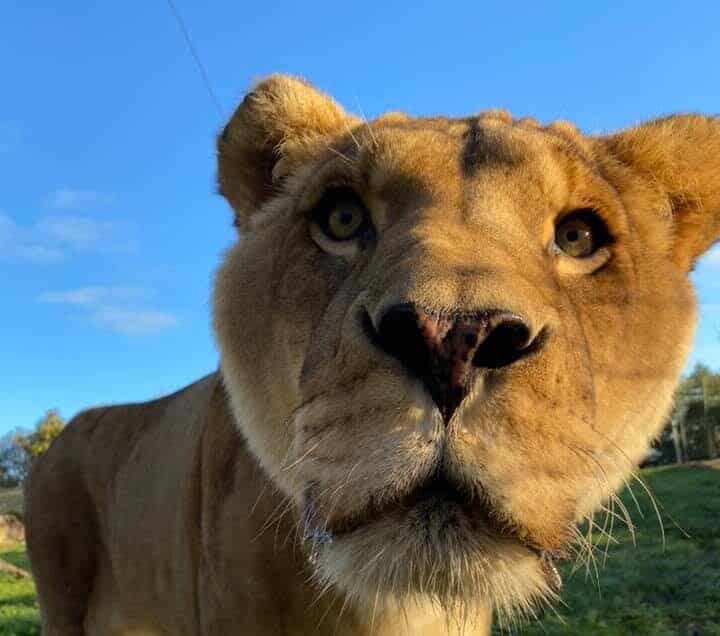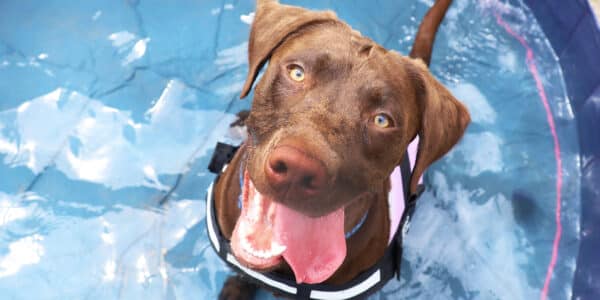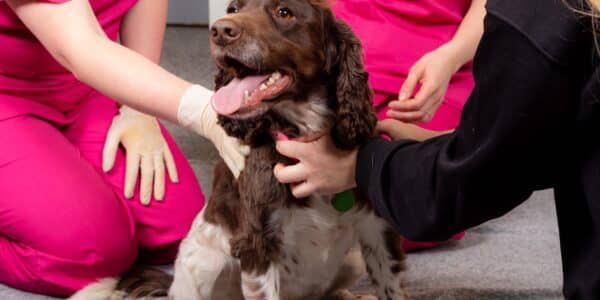Lion has dental surgery using revolutionary new regional anaesthesia device
9/06/2021 - Medovate

A lion at Five Sisters Zoo (West Calder, Scotland) has become the first animal in the world to have dental surgery using a revolutionary regional anaesthesia device developed by NHS clinicians.
Susan Thorne, Clinical Director of DentalVets, carried out the root canal procedure on the lion, who had two teeth extractions.
The pioneering medical device SAFIRA® used in the dental surgery was developed by four consultant anaesthetists at The Queen Elizabeth Hospital King’s Lynn NHS Foundation Trust in Norfolk.
The NHS clinicians worked with Cambridge based medical device company Medovate to bring the device to market in a bid to make regional anaesthesia more autonomous for clinicians and safer for patients.
Speaking after the procedure Susan said: “The SAFIRA® system was very simple and easy to use and allowed me to accurately place my oral blocks.”
Adele Copland, Operations Supervisor at Five Sisters Zoo added: “Striving to give our rescued lions the best care we can at Five Sisters Zoo, we were happy to try this new way of reducing any mouth discomfort they may have had after their specialist dental treatment. Sadly they arrived here with damaged teeth from their mistreatment at the circus from which they were confiscated in Belgium. They have bounced back wonderfully after their treatment and are back to normal.”
In current regional anaesthesia procedures two operators are needed, including a second operator (an assistant) who injects the anaesthetic solution at the required pressure, which relies on ‘subjective feel’. This means anaesthetic solutions can be injected at high pressures which can risk nerve injury.
By turning regional anaesthesia into a one-person procedure, the technology removes the challenges of communicating with an assistant regarding subjective injective pressure feel, thus removing the inconsistency of an untrained hand. The device also incorporates a unique built-in safety solution that limits injection pressure, helping to reduce the risk of nerve injury.
SAFIRA® has already been successfully launched in the human healthcare field in the USA, Australia and New Zealand and will be launched in the UK and Europe in May 2021.
Medovate is now looking to extend the value of this game-changing technology to help veterinary professionals benefit from the unique advantages SAFIRA® can bring to regional anaesthesia procedures.
Chris Rogers, Sales & Marketing Director at Medovate, commented: “This is an amazing story of how an idea developed by NHS consultants is not only helping human patients globally, but it is also making regional anaesthesia safer for animals as well. There are a significant number of regional anaesthesia blocks completed in veterinary practice per annum globally, so potentially this NHS developed device could play a major role in the future of veterinary practice worldwide.”
Regional anaesthesia is an important part of small animal care and is used for many reasons in veterinary medicine and dental surgery, including improved quality of recovery. The use of ultrasound guided regional anaesthesia is becoming more common practice today, with the technique – which can help provide a higher level of visualisation for the practitioner – increasingly seen as a ‘gold standard’.
SAFIRA® has been designed to help deliver a slow, controlled release of anaesthesia which supports visualisation of anaesthetic spread. This can support less anaesthetic being used to achieve the desired result.
For more information please visit the website. Alternatively email contact sales@medovate.co.uk
All articles on this news site are submitted by registered contributors of EssexWire. Find out how to subscribe and submit your stories here »

